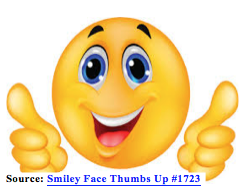
What?
Woo-hoo!
I am pumped! I feel passionate, compelled and motivated to become a connected, collaborative and creative Teacher-Librarian. I finally know I have the skills to apply theory into practice. Other subjects have contributed to my learning and I’ve begun implementing changes such as Guided Inquiry, however, ETL523 has expanded my concept of Digital Citizenship (DC) and “forced” me to use new Web 2.0 tools. Ribble (2016) defines DC as the appropriate use of responsible behaviour regarding technology practice. This subject has extended my view of DC to include student manipulation of technology-researched information to create a meaningful, original, digital artefact, combined with appropriate online behaviour that involves connecting and collaborating one-to-one and in teams, nationally and globally (Stripling, 2010; Wheeler, 2015).
Web 2.0 Tools
I’ve had the opportunity to experiment with a multitude of Web 2.0 tools I had never previously explored:
- Wiki, to collaboratively create units of work;
- Symbaloo, a digital curation tool, which I’ll utilise on our school’s website page;
- Padlet, to introduce ourselves on this subject, which I have employed as a sharing tool with a class overseas;
- Skype, to bond, communicate and collaborate on a team assignment, which led me to connect with a Singaporean teacher to instigate a Mystery Skype that will evolve into a sharing opportunity for students to showcase work completed in class.
I’m no longer scared. There are so many cool tools out there and I’m never going to be able to use them all (Shearing, 2016). It’s not about what you use but how you use the tool to achieve a particular educational goal. Reviewing my blog (Ellis, 2016a), one essential tool to initiate is student curation. I rely heavily on diigo to catalogue my websites and I need to introduce this (or something similar) to assist students with digital organisation.
So what?
Leadership and Teacher Professional Development
My role as TL has extended from being an information resource manger, a curriculum leader, a collaborative partner, a budget manager, a website manager, an information literacy leader (Herring, 2007) and now, includes being a confident technology teacher and leader. “Leadership is needed to promote change” (MacBeath & Dempster, 2008, p. 32). I am a confident educational leader who has led and implemented successful school-wide change in my previous role as Assistant Principal. Experimenting and being challenged by Web 2.0 tools, has made me realise that I need to push myself into the unknown – it’s great to trial and succeed; it’s also okay to fail and think laterally, to overcome problems by seeking collaborative help with those online. It’s not about what you know, but the skills and abilities one uses to come to know.
It is essential to develop a supportive digital learning environment, which is engaging, exciting and motivating in promoting positive student learning outcomes. Optional and informal responses from the Computer Technology survey (Ellis, 2016b), indicated that teacher professional development is fundamental at my school for developing the skills to effectively integrate technology into classroom practice across all curriculum areas, leading to positive student learning outcomes and creating 21st C learners (Hanover Research, 2014, p. 4).
Now what?
The future
Five key points I discussed in a forum post that needed to be included in a DC policy, which was previously non-existent (Ellis, 2016c):
- Acceptable Use Policy (✔);
- DC program (in progress);
- Parent workshops (in the future);
- Utilising Web 2.0 tools with students (✔) and
- Student use and citation of creative commons (in progress).
It is positive to see the ✔’s and progress made during this course. Submitting this report is the next crucial step because I believe it is an honest, practical, theoretically sound and realistic critique of how our school can move forward. My next step is to scrutinise my Personal Learning Network to assist me to take further control of my own life-long learning and move with the times as I adapt to this constantly changing technologically driven world (Cooke, 2012). ETL523 has provided me with the digital confidence and motivation to be a voice in consultation with others, in moving our school forward and fostering 21st C teacher and student learning.
References
Cooke, N. (2012). Professional development 2.0 for librarians: Developing an online personal learning network (PLN). Library Hi Tech News, 29(3), 1-9.
Ellis, S. (2016a). Sammy’s Scribblings: Module 2- Content curation [Blog post]. Retrieved from https://samanthaellis4.wordpress.com/
Ellis, S. (2016b). Computer Technology [SurveyMonkey]. Retrieved from https://www.surveymonkey.com/r/36PYMPX
Ellis, S. (2016c, May 3). Module 6.1: Developing policies to support a DLE [Online forum comment]. Retrieved from https://interact2.csu.edu.au/webapps/discussionboard/do/message?action=list_messages&course_id=_11880_1&conf_id=_18190_1&forum_id=_43210_1&message_id=_712976_1&nav=discussion_board_entry#msg__712976_1Id
Herring, J. (2007). Teacher librarians and the school. In S. Furguson (Ed.), Libraries in the twenty-first century: Charting new directions in information (pp. 27-42). Wagga Wagga, NSW: Centre for Information Studies, Charles Sturt University.
Ribble, M. (2016). Digital citizenship: Using technology appropriately. Retrieved from http://digitalcitizenship.net/Nine_Elements.html
Smiley face thumbs up #1723. (n.d.). [Online image]. Retrieved May 24, 2016 from http://clipartion.com/free-clipart-1723/
Shearing, L. (2016). Web 2.0: Cool Tools for Schools [Website]. Retrieved May 24, 2016 from http://cooltoolsforschools.wikispaces.com/Home
Stripling, B. (2010). Teaching students to think in the digital environment: Digital literacy and digital inquiry. School Library Monthly, 26(8), 16-19.
MacBeath, J., & Dempster, N. (Eds.). (2008). Connecting leadership and learning: Principles for practice. Routledge.
Wheeler, S. (2015). Learning with’e’s: Educational theory and practice in the digital age. United Kingdom: Crown House Publishing Limited.



